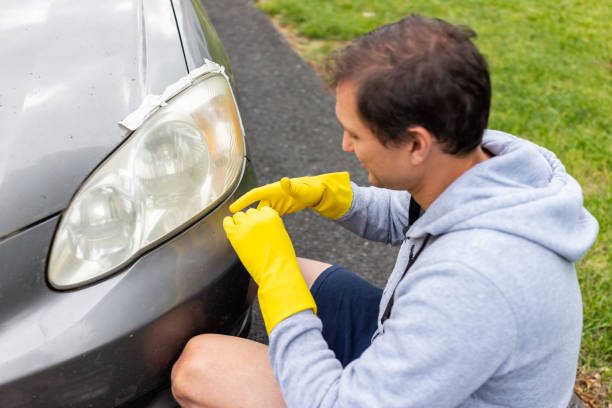Avoid Crashing When Driving Fast - What You Need To Know
I’ve always been a reckless driver when I’m in a rush. Though my car has a 4-wheel ABS braking system, haha. Recently, I’ve been using a BMW 330i, model year 2017. I can’t control my adrenaline when I’m behind the wheel. Let’s learn how to avoid crashing while driving fast.

If somebody else makes a mistake in front of you, the only way you can account for it is by stopping, and knowing how far it’s going to take you to stop is huge. There are only two ways that crashes happen:
One is you run out of talent, lose control of the car, and have a bad day. We’ll call this controllable or avoidable.
The second option is somebody else makes a mistake, and you don’t have enough braking distance to prevent the crash. I call this uncontrollable. You can’t control what other people are going to do, right?
Controllable
Controllables are things that you can affect, things that you should affect. We’ll start with these. I’m going to break this down into two categories: mechanical and human.
Let’s talk about the mechanical side first. There’s some very basic stuff that you can easily get right. If you want to drive fast on the road without crashing, put some good tires on your car. When I got this car, I wasn’t sold on Pirelli, but they’re really good tires.

You can pick any good brand: some Michelin Pilot Sports, Good Year Asymmetrics, or Pirelli P Zeros. It doesn’t really matter as long as they’re decent. Even brands like Kumho, Falken, and Toyo are good. Just don’t put four different brands of cheap tires on your car and wonder why you’re sliding every time you go around a corner. I’m going to talk a lot in this blog about braking. When I talk about the uncontrollables, the mistakes that other people are going to make around you, braking is the only way to protect yourself.
So, make sure your brakes are up to scratch. Make sure they’re in good condition, with good pads and that you’ve actually bled the brakes. All of this sounds super basic, but without the basics, we can’t talk about anything else.
There are even simple things like this morning, before I headed out, I topped up the windshield washer fluid. You never know when you’ll go through a big puddle and it will cover your windshield. If that one time happens to be when you don’t have washer fluid, you won’t be able to see, and if you’re going 60 mph around a corner, you’re going to have a bad day. So, just get the basics right.
The other set of basics is about you, how you drive, and your mindset — the human element.
Let’s hit the road to talk about that. If you’ve got someone in the passenger seat that you’re trying to show off to, you’re not in the right mindset for driving fast. It changes the way you drive. Similarly, if you’re trying to show other drivers on the road how cool you are and how fast your car is, it changes your decision-making and your perception, affecting the way you interact with the road.
There are also basic things like knowing how to control your car, like what to do when you get a little bit of oversteer or understeer. These are the basics I won’t go into in this blog, but I have other blogs on these topics that you can find on my site. If you’re handling a car you’re not quite ready for or don’t understand the difference between driving in wet versus dry conditions, these are things that can really hurt you when driving fast. The best way to avoid self-crashing is to get better at driving. Read all my blogs, do a track day, and slowly build up your pace on the road at a speed that is comfortable for you.
Brake Test
People say you should stop within the distance you can see to be clear. The issue with that is I don’t think many people know how long it actually takes to stop. Is it longer than you think? Shorter? And knowing that distance is absolutely crucial to making a judgment call on whether you can stop in time. To avoid crashing when driving fast, you need to know how long it takes to stop. I’m going to do this test four times: the first at 30 mph.
I’ll drive up the road, and as soon as I hit this cone, I’ll slam on the brakes and see how far it takes me to stop. The second time, I’ll do it again at 30 mph, but this time I want to test the impact of reaction time. I’ll continue driving, and when I hit the cone, I’ll take my foot off the throttle and then apply the brakes. This should give some distance where I’m not braking, as if I’m reacting to a situation.
We’ll then do two more tests at 60 mph and see the braking distance, both with and without reaction time. I’m in my BMW 330i, which has massive 380 mm brakes that I installed later, so don’t take these numbers and apply them to your everyday car. Mine will stop a lot quicker.

First test: 30 mph.
That’s almost no braking distance—basically two car lengths. Pretty cool. Now, let’s do it with reaction time.
This time, I won’t take my foot off the pedal until we hit the cone. And, interestingly, even with the reaction delay, I was better on the pedal, so the distance was actually shorter—less than two car lengths.
Now for 60 mph. Here’s what we all came to find out. That’s definitely much further.
It’s odd because I thought double the speed meant double the distance, but it’s actually more like double the speed equals four times the distance.
Final test, 60 mph, with some thinking time. It’s exciting, right? And wow, that’s a significant distance! I’m guessing around 34 meters. This is an important real-world test because it’s not a racetrack. These are real roads, with ruts and uneven surfaces that caused jerking during braking. The car was all over the place, making this indicative of real-world situations. I didn’t do multiple practice runs beforehand; I did four runs, and that was it.
In real life, you won’t have time for brake practice before someone cuts you off. Another point to consider: this is a BMW 330i, so a regular car is probably going to stop about 50% further.
Thinking you’re in control of the braking distance at 30 mph is misleading. With reaction time, the stopping distance didn’t make much of a difference, but at 60 mph, it’s around 60 meters. From the driver’s perspective, it’s not that far, but it’s important to keep in mind when driving, especially around corners.
This data is critical. Now it’s burned into my head—a visual representation of how far I can go when traveling at 60 mph and need to stop.
Uncontrollable
Now for the uncontrollables: the things we can’t affect. I can’t control if there’s someone around the corner on my side of the road. How do we account for those situations?

The only thing we can do is stop within the distance we can see. As your speed increases, so does your braking distance, as I’ve shown. For instance, right now, at 40 mph, maybe I can stop in time, but it’s risky. At higher speeds, like the speed limit, can I stop in time? Definitely not.
You have to be conscious of what’s on the other side of a crest or corner. When visibility opens up, you can increase speed, but when it reduces, you have to slow down. You also need to remember that braking performance is reduced in corners, and slamming on the brakes mid-corner will throw the car off balance. There could be a cyclist ahead, or someone overtaking them, and you always need to be ready for these situations to avoid crashing.
Some people give me flack for driving fast on certain roads because of the driveways on either side. It’s a fair point—someone could pull out and not see me. While the road may open up and offer good visibility, they’re still right.
It’s these little things that happen daily if you get used to driving fast. You always want enough space to stop before things become a problem. Now, sometimes you’ll throw all this out the window—maybe on a quiet road early in the morning when the risks are incredibly low, like 5am on a Sunday.
Ultimately,
It’s a judgment call. How much risk are you comfortable with? Maybe it’s because my car is expensive or because I’m getting older, but my tolerance for risk has gone down. Even now, at 9am on a Sunday morning, I’m very cautious because these situations pop up all the time, and you have to be ready for them when driving fast.
For me, the braking distance test, especially in a POV, was a game changer. I now better understand what I can and can’t get away with when driving spiritedly.
I hope you found this as useful as I did.


